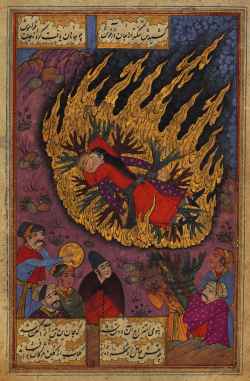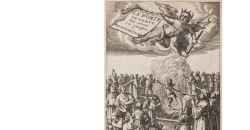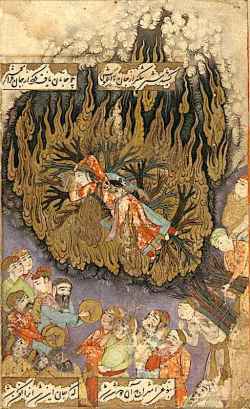An Eighteenth-Century Account of Sati: John Zephaniah Holwell's ‘Religious Tenets of the Gentoos’ and ‘Voluntary Sacrifice’ (1767)
in: South Asia: Journal of South Asian Studies, v. 40 (2017), issue 1: pp.24-39.
Edited by: Chiara Petrolini
Related Documents:
Satī, from a Sūz u Gudāz manuscript. The union of the couple on the pyre (1657)
from: Sūz u Gudāz ms, Iran, Walters Manuscript W. 649, fol. 19b (Burning and Melting)
The Walters Art Museum, Baltimore, Maryland
Scene of a Sati, with a woman throwing herself into the flames amid a crowd playing trumpets. Above, a winged devil holds the banner with the book's title and the torch with which he lights the ritual fire. (1670)
from: Abraham Rogerius, Le Théâtre de l’idolatrie ou la porte ouverte, Amsterdam, Jean Schipper, 1670, title page
Satī. The bride immolates herself on the funeral pyre (1657)
from: Isfahan, Iran
The Israel Museum, Jerusalem
Les Veuves de Malabar: Sati, Colonialism, and the Enlightment
in: French Theatre, Orientalism, and the Representation of India, 1770-1865, pp. 19-71
Abingdon - New York: Routledge, 2021.
in: Burning Women Widows, Witches, and Early Modern European Travelers in India, pp.
New York: Palgrave Macmillan, 2003.



